Don’t let nuclear accidents scare you away from nuclear power
By Bulat Aytbaev, Dmitry Grigoriev, Vladislav Lavrenchuk, Noah C. Mayhew | August 31, 2020
 Oil containment equipment is staged at a marina on Dauphin Island, Alabama to mitigate the environmental and economic impact from the Deepwater Horizon oil spill, 2010. Photo credit: US Navy.
Oil containment equipment is staged at a marina on Dauphin Island, Alabama to mitigate the environmental and economic impact from the Deepwater Horizon oil spill, 2010. Photo credit: US Navy.
In the search for a carbon-free energy mix for the future, nuclear energy remains controversial. Public anxiety about nuclear power stems primarily from concerns about safety and the potential of major accidents. However, an analysis of the three most serious nuclear accidents—Three Mile Island, Chernobyl, and Fukushima Daiichi—suggests that the direct threat on human life has been overstated. Still, there are other risks and consequences to consider, including the enormous scale of the disruption and the imprint on public consciousness, particularly in the cases of the Chernobyl and Fukushima.
What is often left out of the debate about the safety record of nuclear energy are the risks of alternative forms of electricity generation. Even after accounting for both the immediate and long-term toll of the three accidents, nuclear power has a remarkably safe track record compared to coal, natural gas, and even hydroelectric power.
Moreover, nuclear energy can play a key role in climate change mitigation. In order to reach the goals set out by the 2015 Paris Agreement, nuclear power will need to double its contribution to the energy mix. But countries will not be able to do this if they do not have the support of their publics.
One remedy is to increase the emphasis on education, including toward the younger generations, so that citizens can make informed decisions on the benefits of nuclear energy. With education, societies may remember the lessons so painfully imparted by nuclear disasters, but also recognize that those lessons are being applied to make nuclear energy a part of a sustainable future.
The Scare of Three Mile Island. In March 1979, a series of mechanical and human errors at the Three Mile Island nuclear power plant in Pennsylvania lead to partial meltdown in the reactor, resulting in a limited release of hazardous radioactive gas into the atmosphere. Officially, the affair caused no fatalities or injuries. But the lack of prior crisis planning for nuclear accidents resulted in poor coordination between first responders and poor communication with the public.
About 40 percent of the people who lived within 15 miles of Three Mile Island were evacuated. Inconsistent accounts of events by authorities led to news reports and media dramatizations that created chaos during the evacuation that was far worse than the accident itself. Television specials following the accident used sensational titles for their broadcasts, like ABC’s “Three Mile Island: Nuclear Nightmare.” Nearby residents withdrew cash from the bank and put their homes up for sale. Area priests stoked fears by granting “general absolution.” Mass protests took place across the country in response to the accident, including one in New York City that attracted 200,000 people.
But for all the panic, the health effects of the accident were minimal. The approximately 2 million people around the reactor during the accident are estimated to have received an average radiation dose of only about 1 millirem above background levels. For comparison, a typical chest X-ray carries a 6 millirem dose.
After the accident, public support for nuclear energy in the United States fell from a record high of 69 percent in 1977 to 46 percent in 1979. The next power plant in the United States would not be built for more than 30 years. Today, support for nuclear power in the United States remains lukewarm. According to a 2019 Gallup poll, 49 percent of Americans favor use of nuclear energy and 49 percent oppose. The major limitation today is the high cost.
The Reality of Chernobyl. The Chernobyl accident of April 26, 1986 left a much deeper mark than Three Mile Island, both in terms of real effects of the disaster and the public perception of it. Disaster struck because the plant suffered from profound defects in reactor design, lack of a requisite safety culture, and mistakes made by the power station operators.
Although the accident resulted in the immediate death of between 30 and 50 people, many more died in the years following as a result of cancers caused by exposure to radiation. While there is still no consensus on how many people that may be, credible estimates range anywhere from 4,000 to 60,000.
In Ukraine and Belarus the reality on the ground was tragic. Of the 400,000 Ukrainians, Belarusians, and Russians living in the contaminated area, 116,000 were evacuated in the Summer of 1986 and another 220,000 in subsequent years. They were evacuated from their homes without their possessions, leaving nothing but abandoned buildings. Though they were told the evacuations were temporary, most never returned, and much of the area remains uninhabitable.
As a result of the accident, anti-nuclear movements that protest the expansion of nuclear energy sprang up all over the globe. The populations of some countries in the range of Chernobyl’s radioactive cloud remain vehemently anti-nuclear today, notably Austria. In 2006, Mikhail Gorbachev stated, “The nuclear meltdown at Chernobyl, even more than my launch of perestroika, was perhaps the main cause of the Soviet Union’s collapse five years later.”
However, Russian public sentiment toward nuclear energy was not irreparably damaged—likely because of Soviet policy makers’ interest in preserving the Soviet nuclear industry. According to the Levada Center, a societal polling organization in Russia, in the year 2000, 69 percent of Russians thought that a catastrophe on the order of Chernobyl was either very likely or quite likely in the near future. In 2019, only 30 percent of respondents shared that sentiment.
Following the Chernobyl disaster, nuclear safety culture became a tenet of the global nuclear power industry. The International Atomic Energy Agency began to actively promote safety-by-design, the practice of building inherent safety features into the design of new power plants. For its part, the Russian nuclear industry recovered. It was able to implement a massive integration of safety culture into the design and operation of its new nuclear power plants. The result is that Russia has become the leading exporter of nuclear power plants today.
The Lesson of Fukushima. After the Chernobyl disaster, the world did not see another major nuclear accident for 25 years. On March 11, 2011, a magnitude 9.0 earthquake and a 15-meter-high tsunami hit Japan, causing widespread disaster across coastal Japan. This included loss of electricity to the Fukushima Daiichi nuclear power plant, which resulted in a loss of cooling and, ultimately, a nuclear meltdown. As three containment vessels were breached, hydrogen escaped into the atmosphere and there were explosions in Units 1, 3, and 4.
The late Director General of the International Atomic Energy Agency, Yukiya Amano, observed that a major contributing factor of the accident was the assumption that Japanese nuclear power plants were simply too safe for a disaster of this scale ever to occur. Neither operators, nor regulators, nor the Japanese government challenged this assumption. As a result, Japan was not prepared for such a massive disaster.
The earthquake and tsunami directly lead to the deaths of 15,000 people and the injury of 6,000 more. Many are still missing. More than 100,000 people were evacuated from the area around the Fukushima Daiichi plant, most of whom have not been allowed to return. In contrast to the immediate aftermath of the Chernobyl accident, the United Nations Scientific Committee on the Effects of Atomic Radiation reported in 2013 that there were no deaths attributed to radiation following the incident. However, in 2018 a plant worker died from lung cancer believed to be the result of radiation exposure.
The UN committee noted that, though the doses to the general public are not expected to cause “discernible increased incidence of radiation-related health effects,” the biggest health effect is on the mental and social well-being of people due to the disaster and the fear it created. Following the disaster, civil support for nuclear power unsurprisingly plummeted in Japan.
In June 2012, 70 percent of the Japanese population believed the Japanese government should reduce the role of nuclear power, increased from only 44 percent before the accident. This was compounded by widespread fear of the contamination of the soil in Fukushima prefecture and coastal waters surrounding the plant.
Negative sentiment toward nuclear power has continued in Japan despite the conclusions of the World Health Organization that the general population would not see a rise in baseline cancer risks. The percentage of the Japanese public that believes nuclear power is necessary has steadily dropped since the accident, from 35.4 percent in 2010 to 23.5 percent after the accident in 2011 and to 17.9 percent in 2017.
However, the disaster at Fukushima has left powerful lessons on weaknesses in plant design on one hand and emergency preparedness and response on the other. The assumption that only a short loss of power was possible led designers not to prepare for longer blackouts. Nor did they consider that not one but many reactors at a plant could suffer from crisis at the same time.
The accident emphasized the importance of choosing a proper site to build a nuclear power plant, especially in an earthquake-prone region of an island nation, and having an independent regulator to ensure adequate safety of design and operations of reactors.
The clarion call for nuclear energy. There is no doubt that the effects of nuclear disasters are frightening, but they should be viewed as lessons for the future, rather than reasons to eliminate this useful, low-carbon source of energy. Three Mile Island left a scar on the US nuclear industry for several decades, but it led to significant improvements in regulations and operations of US reactors. Chernobyl left portions of Ukraine and Belarus uninhabitable, but sparked important improvements in nuclear safety that changed the design and operation of nuclear power plants in Russia.
Despite these accidents, nuclear energy has saved far more lives than it has taken. Based on historical electricity production data and mortality and emission factors from peer-reviewed scientific literature, a NASA science brief claims that nuclear power prevented perhaps 1.8 million deaths worldwide between 1971 and 2009. The brief details that, in the absence of nuclear power, the energy it produced would most certainly have been produced with fossil fuels, likely coal, which would have led to higher pollution-related mortality rates. On the basis of these data, NASA concludes that nuclear power should be retained and expanded.
Of all the sources of electricity generation, nuclear energy may be among the safest. According to data gathered by science writer Phil McKenna in 2011 immediately following the Fukushima accident, nuclear energy causes between 0.2 and 1.2 deaths for every 10 terawatt hours of electricity generated. Coal, by contrast, causes between 2.8 and 32.7 deaths for every 10 terawatt hours. In his report, McKenna found nuclear energy to be safer than hydroelectric power and natural gas as well.
In one extreme example, a 1975 hydroelectric dam disaster in China accounted for between 150,000 and 230,000 deaths, far surpassing even the high estimates of deaths related to nuclear power. In 2005 alone, there were 3,306 accidents in Chinese coal mines, resulting in 5,938 deaths, followed by 4,746 deaths the next year. Finally, even though the Deepwater Horizon oil spill in 2010 was responsible for far fewer human deaths (11 deaths and 17 injuries), the oil contaminated more than 57,500 square miles (149,000 square kilometers) of the Gulf of Mexico and cost over $40 billion to clean up.
The fact is that producing energy—nuclear or otherwise—can be dangerous. But the world runs on energy. Despite the trauma caused by the accidents at Three Mile Island, Chernobyl, and Fukushima, officials across the world learned important lessons in reactor design, operation, and regulatory practices, all contributing to improved safety. Nuclear safety culture is now a central tenet in the design and operation of nuclear reactors. The increasing role of passive safety features and extensive vetting of reactor designs has made “meltdown-proof” reactors the standard goal in the nuclear energy field. Indeed, safety was identified by the Generation IV International Forum as a key component in the design of new nuclear reactors. Compare the risks of nuclear energy to those of other energy sources and nuclear energy becomes an essential component for sustainable, low-carbon electricity generation.
Moreover, it is not simply that governments and energy suppliers can use nuclear energy safely. It is that they must. The world’s energy demand is rising and cannot run on fossil fuels alone—at risk of further aggravating the effects of climate change—or be supplemented solely by other renewable energy sources.
So, while the lessons from nuclear disasters should not be forgotten and the risk of repeating those disasters must be minimized, nuclear energy remains a necessary part of a future sustainable energy mix. While other concerns such as cost may remain barriers to an expansion of nuclear power, safety should not.
Together, we make the world safer.
The Bulletin elevates expert voices above the noise. But as an independent nonprofit organization, our operations depend on the support of readers like you. Help us continue to deliver quality journalism that holds leaders accountable. Your support of our work at any level is important. In return, we promise our coverage will be understandable, influential, vigilant, solution-oriented, and fair-minded. Together we can make a difference.
Keywords: Chernobyl, Fukushima, Three Mile Island, nuclear accidents, nuclear energy
Topics: Nuclear Energy, Voices of Tomorrow





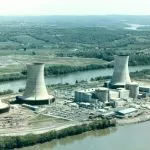


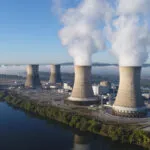
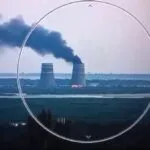


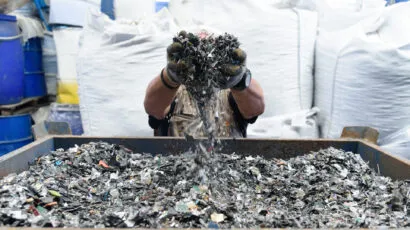




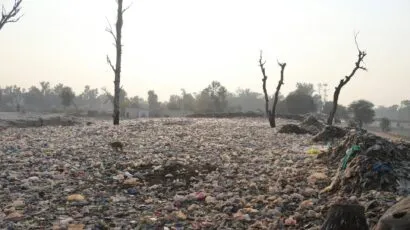

It is very instructive that every article you read that promotes nuclear energy fail to mention how incredibly expensive it is considering building plants, operating them, decommissioning them and storage of waste material. Everyone knows that nuclear energy is the most expensive power source, but that is conspicuously absent from their advocacy.